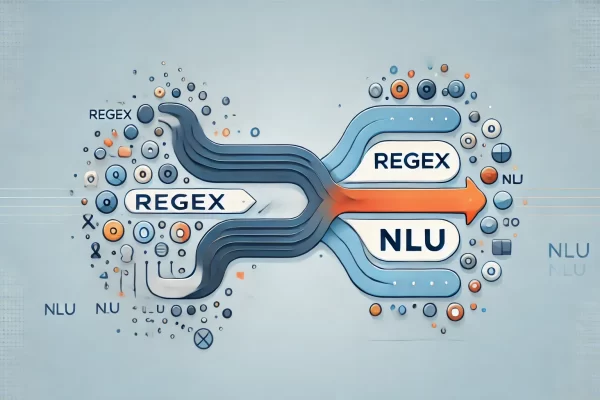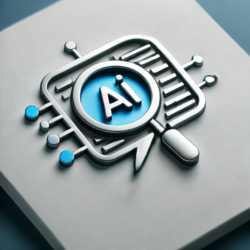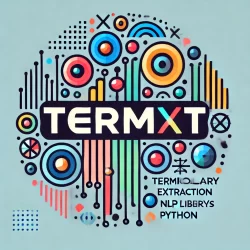Welcome to The Lingua Engineer, where we blend the art of linguistics with cutting-edge technology. Today, I am tackling one of the biggest challenges for anyone working in translation and localization: maintaining consistent terminology. As AI and NLP technologies evolve, they’re providing unprecedented solutions to streamline terminology management. But how do these tools actually impact the day-to-day work of a terminologist? Let’s get into the specifics.
Why Terminology Consistency Is Critical for Professionals
As a terminologist or localization expert, you know terminology consistency isn’t just about being neat. It’s about accuracy, efficiency, and ensuring clarity across every single piece of content—whether it’s a legal contract, a user manual, or a marketing campaign. When terms slip into inconsistency, we risk damaging not only the content but also the brand’s credibility and customer trust. But here’s where AI really steps in to help—handling large-scale, complex terminology tasks that would take humans hours or even days to process.
The Real Impact of AI-Driven Tools on Terminology Tasks
AI isn’t just a buzzword. It’s a practical, hands-on game changer for terminologists. Let’s take a closer look at the specific tasks you perform and how AI tools are making them faster and more accurate:
1. AI-Powered Term Extraction
Term extraction is one of the core tasks for any terminologist, and it often involves manually combing through vast amounts of content to identify key terms. AI dramatically speeds this up.
What AI Does
Using advanced Natural Language Processing (NLP) algorithms, AI-powered term extraction tools go beyond basic keyword detection. These tools can intelligently identify terms based on linguistic patterns and contextual relevance—pulling out terms that are crucial not just in one document but across entire datasets. For instance, TermXT, an NLP-driven extraction tool that I created, uses NLP to identify terms and variations specific to your field, ensuring nothing critical is missed. See TermXT in action!
Real-World Example
Imagine working on a technical manual for a global product release. With an AI-powered term extraction tool, you can process thousands of pages in minutes, automatically pulling out domain-specific terms like “circuit board”, “pressure valve”, or “API key”. AI ensures that these terms are identified with precision, even accounting for variations in phrasing or contextual use.
2. Term Harvesting and Metadata Population
After extraction, the next challenge is organizing terms in a way that’s useful for translators and content creators. This involves term harvesting and populating term metadata—a task that’s often labor-intensive.
How AI Helps
AI tools can automate not only term harvesting but also the metadata population. AI-driven tools analyze the extracted terms, identify associated metadata like definitions, synonyms, and domain-specific context, and automatically populate this data into your terminology database. This ensures that each term is not only captured but enriched with meaningful, searchable metadata.
Your Own Solution
One such example is the Term Metadata Harvester (integrated in TermXT) tool I’ve developed. This AI-enhanced tool captures terms and automatically populates key metadata fields—saving terminologists hours of manual input. The AI doesn’t just gather terms but also pulls in relevant context, definitions, and preferred translations, making sure your termbase stays current and comprehensive.
Hands-On Example
Say you’re managing a global software localization project. Your term extraction tool has pulled out the key terms like “user interface” and “authentication token.” Now, with the help of AI, the term harvester not only organizes these terms but also enriches them with definitions, example usages, and context—automatically. No more manual searching and inputting; AI does the heavy lifting.
3. Consistency Checkers with AI Insight
Once terms are extracted and harvested, ensuring their consistent use across all content is the next challenge. Traditional tools might flag inconsistencies, but AI-powered consistency checkers are far more intuitive.
How AI Improves It
AI-driven consistency checkers leverage machine learning models to scan entire multilingual content sets for inconsistencies in term usage—considering not just literal matches but also semantic nuances. These tools can intelligently flag where a term might be contextually inconsistent, even if basic keyword matchers did not miss it.
Advanced Example
During the localization of an e-commerce website, AI consistency checkers will flag if “checkout” is sometimes translated as “payment” in one place and “finalize order” in another. The AI not only catches these discrepancies but also suggests contextually relevant corrections, ensuring consistency that aligns with the product’s branding and intent.
4. AI-Driven Real-Time Feedback in Translation
In today’s fast-paced world, waiting until the end of a project to check for consistency is too slow. AI offers real-time feedback through integrated tools that flag issues as they arise during translation.
What’s New
AI-enhanced CAT tools now provide real-time suggestions and corrections as translators work. By analyzing the termbase and linguistic patterns in real time, AI ensures that translators receive immediate feedback when using terms inconsistently. This minimizes post-editing and ensures consistency throughout the translation process.
Example:
Imagine working on a healthcare document where the term “diagnostic test” appears in multiple forms across languages. The AI integrated into your CAT tool will flag any deviation from the preferred translation immediately, allowing you to make corrections as you go.
Techniques Leveraging AI for Consistency
These tools become even more powerful when combined with the right techniques. AI doesn’t just apply static rules; it learns and adapts:
- Dynamic Termbase Updates: AI continuously learns from your ongoing projects. As new terms are extracted and metadata is updated, the AI dynamically improves your termbase, ensuring it stays relevant and accurate across different projects and languages.
- Context-Aware Suggestions: Unlike basic tools, AI-powered systems offer contextually relevant suggestions. This ensures that terms are used in ways that fit the specific cultural and linguistic context of the target language.
- Automated Metadata Enrichment: By automating the process of enriching extracted terms with metadata, AI allows terminologists to focus on higher-level strategic decisions rather than manual, repetitive tasks.
Bringing AI into the Terminologist’s Workflow
Integrating AI tools into your workflow isn’t just about saving time—it’s about improving accuracy and scalability. Here’s how to approach it:
- Start with Your Termbase: Incorporate an AI-driven term extraction tool, like TermXT, to instantly boost the size and relevance of your termbase.
- Empower with Metadata: Use AI-powered metadata harvesters to populate your termbase with context and definitions, making it more actionable for your team.
- Real-Time Corrections: Ensure that your CAT tools leverage AI-powered consistency checkers to catch discrepancies before they become project-wide issues.
Challenges? Sure, but the Benefits are Huge
Yes, adopting AI tools comes with challenges—data privacy, cost, and training are key concerns. However, the return on investment is undeniable. The ability to automatically extract, enrich, and ensure the consistent use of terms transforms a once painstakingly manual process into a streamlined, efficient operation. And let’s not forget—AI tools are only as powerful as the people who use them. Human oversight and expertise are still the critical piece of the puzzle.
The Future of Terminology Management Is Here
With AI-driven tools now able to handle the bulk of repetitive tasks—term extraction, metadata population, and consistency checking—terminologists can focus on more strategic and creative aspects of their work. AI is not just helping us work faster; it’s helping us work smarter. By embracing these tools, you’re not just keeping up with the industry—you’re leading it. The future is bright, and the time to act is now.





![[post-views]](https://www.veriloquium.com/wp-content/uploads/2025/02/DALL·E-2025-02-26-11.58.33-A-modern-minimalistic-digital-illustration-for-Real-Quality-Management-RQM-in-localization-and-translation-QA-using-a-clean-and-subtle-color-schem-600x400.webp)
![[post-views]](https://www.veriloquium.com/wp-content/uploads/2025/02/DALL·E-2025-02-26-11.58.33-A-modern-minimalistic-digital-illustration-for-Real-Quality-Management-RQM-in-localization-and-translation-QA-using-a-clean-and-subtle-color-schem-300x200.webp)



